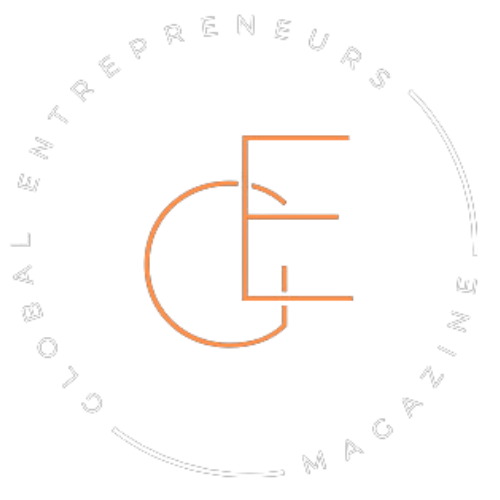It’s 2:14 AM. The office is empty, the Slack notifications have gone silent, and the only thing still buzzing is the espresso machine. Somewhere in a co-working space—or maybe a cluttered apartment—a founder is staring at a screen. Not out of inspiration. Out of desperation.
They’ve hit a wall.
The product idea is good. At least, it felt good last week. But the prototype’s half-baked, the user feedback is thin, and there’s no budget for a designer, let alone a dev team. What used to be adrenaline has now turned into anxiety.
Then something shifts.
An AI tool spins up a wireframe in minutes. Another one fills in the gaps with copy that doesn’t sound like it was written by a robot. A third starts simulating how users might interact with the product—and just like that, things begin to move.
Not perfectly. Not magically. But faster. And better than expected.
This is what building looks like now. Not in theory. In practice. Founders are trading in burnout for momentum, using AI not to replace their grit—but to give it room to breathe.
Let’s talk about how they’re doing it.
Idea to prototype in a day? It’s already happening
Not long ago, turning an idea into a working prototype meant two things: late nights and lots of favors. You’d sketch on napkins, beg a designer friend for mockups, and maybe hack together something on Webflow. Weeks would pass before you had something halfway decent to show a potential user.
Now? Some founders are pulling it off in a single weekend—with fewer people and way less guesswork.
Take Clara, an indie founder working on a wellness app. She used ChatGPT to brainstorm onboarding flows, then handed it off to Uizard to generate screens that actually looked usable. Midjourney helped her visualize a brand vibe, and GPT-4 turned her messy notes into clean microcopy. Within 48 hours, she had a clickable prototype that felt real.
She didn’t cut corners. She cut friction.
Another founder used Replit’s AI tools to scaffold backend logic without touching a single line of code himself. He focused on product behavior—what the app should feel like—while AI handled the grunt work. No giant team. No huge budget. Just momentum.
The truth is, the barrier to building has quietly collapsed. Founders aren’t just moving faster for speed’s sake—they’re making better decisions earlier because they can see the product sooner.
Ideas don’t have to sit around waiting anymore. If you can think it, you can test it. This weekend, even.
Listening to customers before they say a word

Before launch, most founders rely on gut instinct or a few scattered interviews to shape their product. But some are getting a clearer picture by skipping the guesswork altogether.
Julian, building a productivity tool for freelancers, didn’t wait for feedback. He pulled thousands of Reddit comments from r/freelance, r/notion, and a few niche Discord communities. Then he ran them through an AI model to find recurring pain points—things people were frustrated about but didn’t always articulate clearly in surveys.
He wasn’t just mining data. He was eavesdropping on the unfiltered version of his users’ world.
Another founder scraped app store reviews—not just from competitors, but from adjacent tools people used for scheduling and time tracking. With the help of AI, she grouped complaints, spotted missing features, and even flagged common phrases users used to describe what they wished the tools did.
No team of researchers. No $10k market study. Just sharper ears.
That kind of insight used to come after months of building the wrong thing. Now, it comes before a single line of code.
Smarter product decisions without a team of analysts
When Max launched his SaaS tool for indie game developers, he couldn’t afford a data team. But he still needed answers—real ones. Which features mattered most? Where were users dropping off? What would actually keep them around?
Instead of flying blind, he plugged his usage data into an AI model trained to predict user churn. Then he ran simulations on different onboarding flows. The result? A simplified experience that boosted activation by 30%—and he figured it out before a single support ticket came in.
Another founder, building a fintech tool, fed anonymized feedback and user behavior into a no-code AI dashboard. It didn’t give her perfect answers. It gave her better questions. Why were people skipping a key feature? Why were they abandoning sign-up midway? She could finally spot the signals without spending weeks in spreadsheets.
This isn’t about replacing intuition. It’s about giving it backup. Founders are still making the calls—but with sharper context and fewer blind spots.
The invisible co-founder
Some founders talk about AI the way they’d talk about a co-founder. Not because it dreams up the next big idea, but because it sticks around when no one else can.
Jules, running a two-person startup, uses AI agents to handle first-line support. When someone runs into a bug or can’t figure out a feature, an AI steps in with context-aware help. It doesn’t just spit out canned replies—it learns from past tickets, adapts, and even flags edge cases for Jules to review.
Meanwhile, another founder uses AI to write technical documentation as the product evolves. Every new feature gets logged, explained, and published—without pulling an engineer away from actual code. It’s like having a product manager and a tech writer, minus the payroll.
For some, AI now handles onboarding emails, social media scheduling, bug tracking, even test case generation. Not as one-off tools, but as persistent support.
It’s not a teammate in the traditional sense. But it’s showing up every day, asking, “What needs to get done?”
The real risk: moving fast without breaking trust
Speed is addictive—especially when things finally click. But there’s a line between moving fast and moving careless, and some founders are learning that the hard way.
Mira launched her productivity app with AI-generated onboarding emails. They looked clean. Professional. On-brand. Until she realized they didn’t match how she actually spoke to her users. Too formal. Too cold. It felt off—and her early adopters noticed.
Another founder used an AI writing assistant to handle customer responses. It worked for a while, until one reply came off as dismissive in a support thread. Not malicious. Just tone-deaf. But it was enough to shake a user’s trust.
AI can do a lot. But it doesn’t carry your brand voice, your values, or your instincts—unless you teach it. And even then, it needs watching.
The founders who win with AI aren’t the ones chasing shortcuts. They’re the ones who keep checking the mirror. Making sure speed doesn’t come at the cost of who they are or how they serve.
It’s still about the person behind the product
The tools are sharper now. The timelines are shorter. What used to take a team can sometimes be done by one person and a well-trained model. But none of it works without someone who knows what they’re building—and why.
Founders are still the heartbeat. AI can sketch, ship, and sort through noise, but it doesn’t care if the product is any good. It doesn’t know if the feature actually matters. That clarity still comes from a person with vision, taste, and a little bit of obsession.
Go back to that founder at 2:14 AM. They didn’t find magic in an AI tool. They found momentum. They still had to decide what to build, who to build it for, and when to hit pause.
That part hasn’t changed. And maybe it never will.




